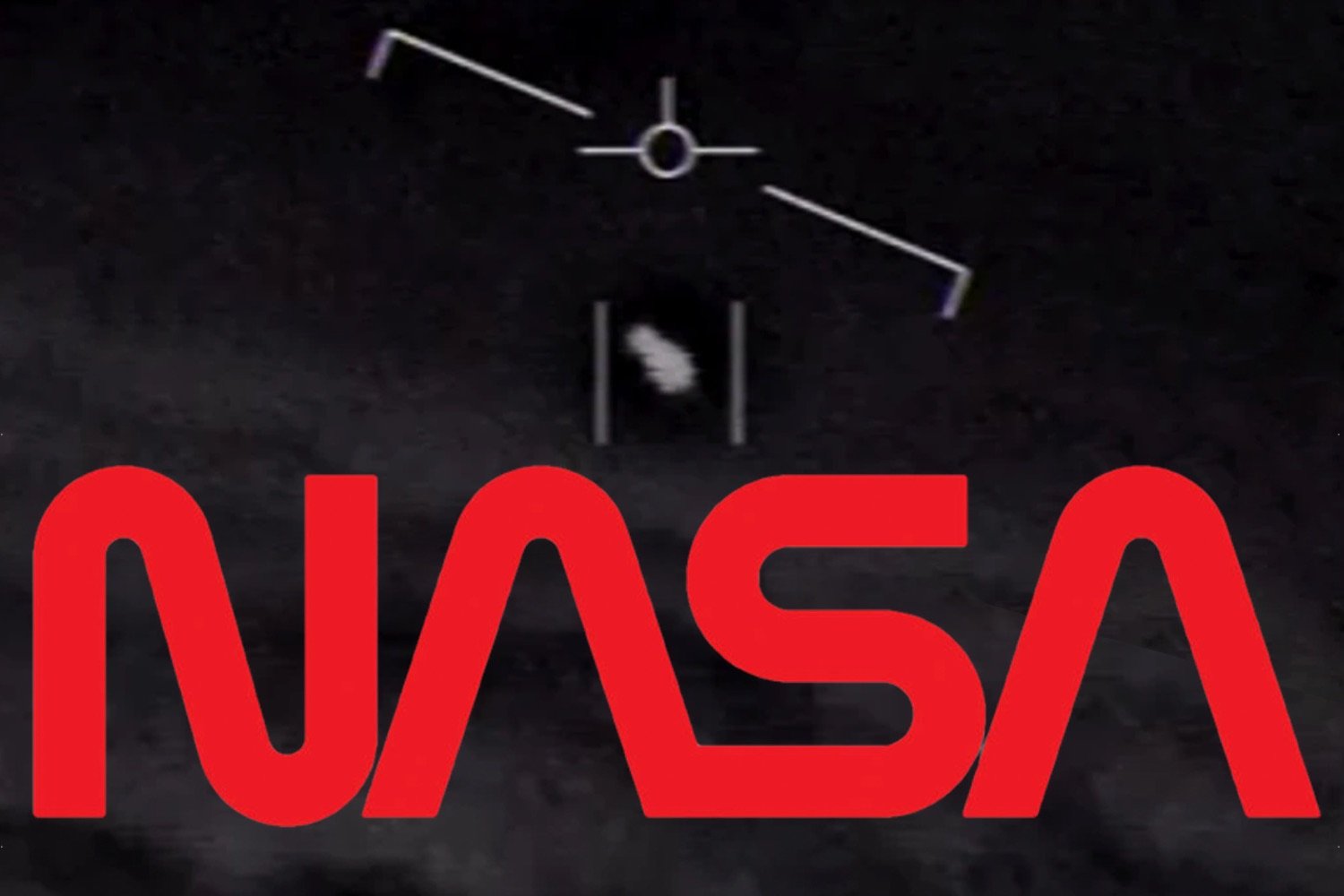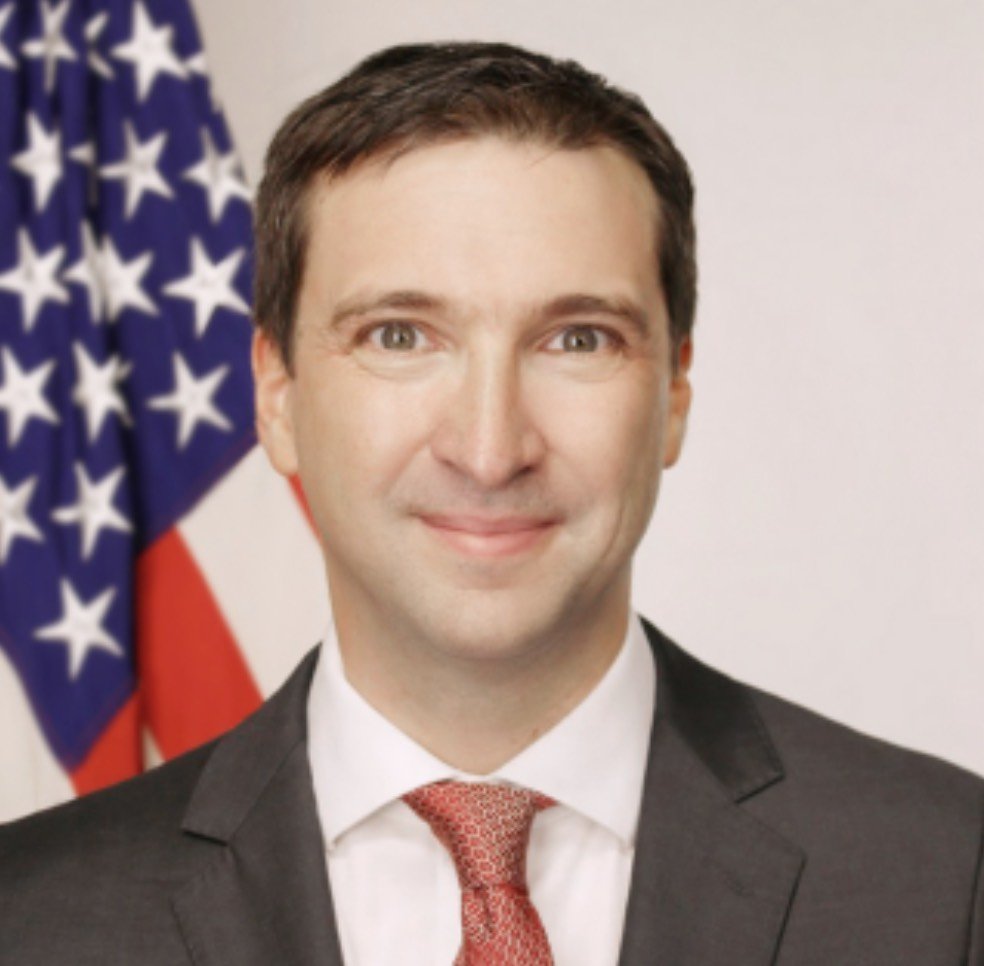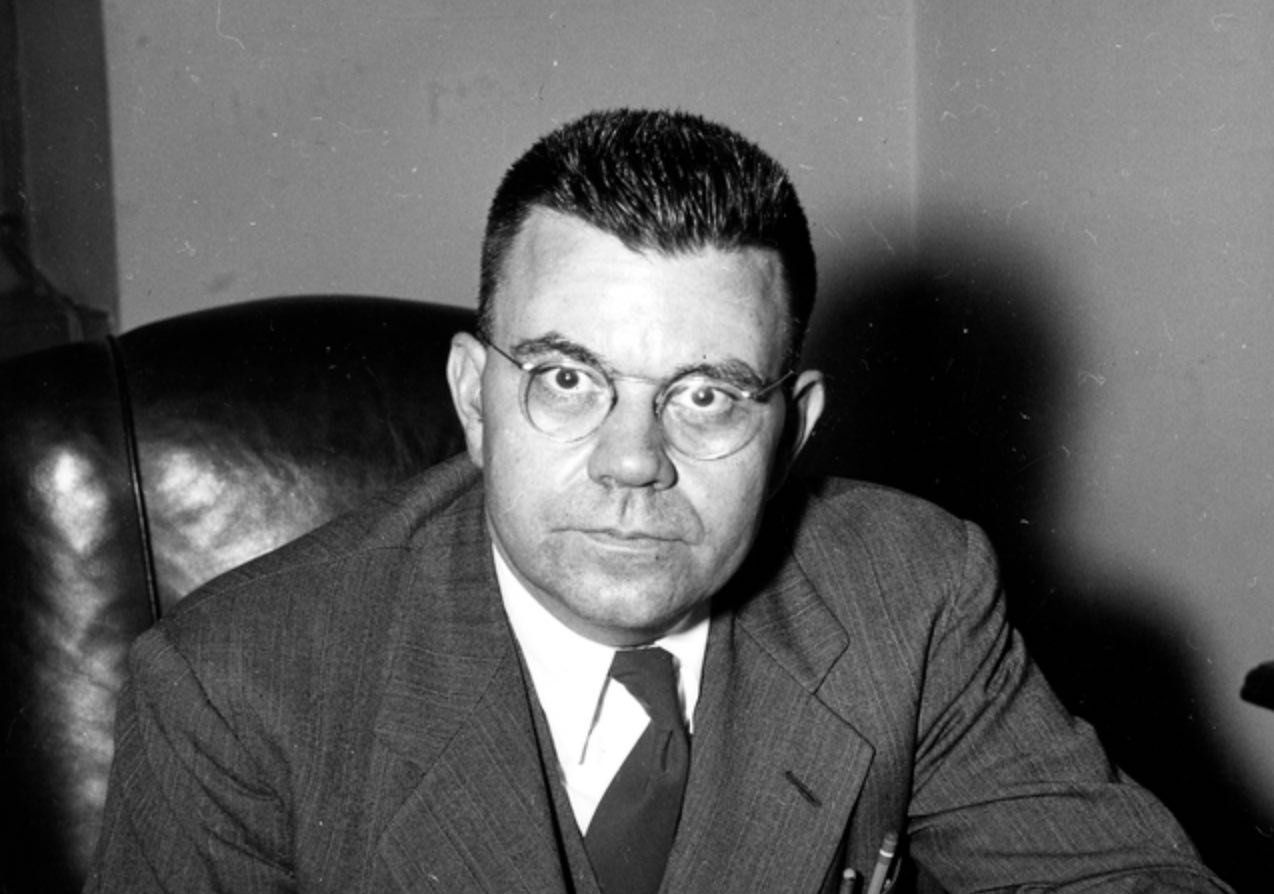

Welcome to this week’s installment of The Intelligence Brief… with the new NASA UAP study now underway, in recent days we learned who the space agency has selected to collect and study data related to the phenomenon. In light of this news, our analysis will include 1) a look at the latest developments as NASA’s study officially begins, 2) the team that has been selected to participate in the study, 3) why minor controversy unfolded with the annoncement of one of the team members, and 4) what a look to history shows about how scientific studies can shift public attitudes toward the UAP subject.
Quote of the Week
“Right now, there could well be messages from the stars flying right through this room. Through you and me. And if we had the right receiver set up properly, we could detect them. I still get chills thinking about it.”
– Frank Drake
Before we get into our analysis, a few of the stories we’re looking at this week include how researchers recently showed a particularly hearty strain of bacteria known as “Conan the Bacterium” could survive buried on Mars for 280 million years. Elsewhere, after seven-plus years, the United States Air Force and Northrop Grumman are finally ready to reveal their sixth-generation B-21 Raider Stealth Bomber… or at least certain angles of it. Also, in light of this week’s analysis of NASA’s UAP study, astronomer Avi Loeb recently shared some of his thoughts following a recent meeting in Washington with members of the forthcoming NASA UAP Study.
Meanwhile over in video news, on the latest installment of Rebelliously Curious with Chrissy Newton, our intrepid host sat down with researcher Ben Hansen and pilot Mark Hulsey for a discussion about recent sightings of purported UAP by pilots. Be sure to check out all of our latest videos over on The Debrief’s YouTube Channel, and we’ll have links to all our recent stories at the end of this newsletter.
With that, it’s now time to dig into NASA’s UAP study, and have a look at the latest regarding the American space agency’s forthcoming efforts to collect and analyse data about mysterious phenomena in our skies.
NASA Provides an Update on its UAP Study
This Monday, a team of scientists and other experts selected by NASA commenced work on its official study on unidentified aerial phenomena, according to an update on the space agency’s website that revealed the sixteen team members it has chosen to participate.
“NASA has selected 16 individuals to participate in its independent study team on unidentified aerial phenomena (UAP),” the statement read. “Observations of events in the sky that cannot be identified as aircraft or as known natural phenomena are categorized as UAPs.”
According to the NASA statement, the study team will spend the next nine months undertaking a data collection and study effort the agency says, “will lay the groundwork for future study on the nature of UAPs for NASA and other organizations.” The team says it will focus “solely on unclassified data” partly collected from “civilian government entities,” as well as data from commercial areas and other sources that may be useful to the study, which will be included as part of a program for future study and analysis. The team’s findings are to be revealed publicly by sometime in mid-2023.


“Unidentified aerial phenomena are of interest for both national security and air safety and the study aligns with one of NASA’s goals to ensure the safety of aircraft,” the NASA statement read, with reference to one of the space agency’s less often discussed—but no less important—areas of focus: aviation safety. Along with NASA’s Airspace Operations and Safety Program (AOSP), which oversees projects involving Airspace Technology Demonstrations (ATD), Air Traffic Management—Exploration (ATM-X), System-Wide Safety (SWS), and UAS Traffic Management (UTM), NASA also maintains the Aviation Safety Reporting System (ASRS) on behalf of the Federal Aviation Administration (FAA).
“Without access to an extensive set of data, it is nearly impossible to verify or explain any observation, thus the focus of the study is to inform NASA what possible data could be collected in the future to scientifically discern the nature of UAP,” the statement read.
NASA’s UAP Dream Team
Along with the team members previously announced by NASA, which included Daniel Evans, the assistant deputy associate administrator for research at NASA’s Science Mission Directorate and primary orchestrator of the study, and study chair David Spergel, president of the Simons Foundation, the statement also revealed the other individuals who will be participating.


According to NASA’s October 21 press statement, the complete lineup of UAP study team members, along with Evans and Spergel, is as follows:
- Anamaria Berea: associate professor of Computational and Data Science at George Mason University in Fairfax, Virginia.
- Federica Bianco: joint professor at the University of Delaware in the Department of Physics and Astrophysics, the Biden School of Public Policy and Administration and a Senior Scientist at the Multi-city Urban Observatory.
- Paula Bontempi: biological oceanographer, sixth dean, and second woman to lead the Graduate School of Oceanography at the University of Rhode Island (URI).
- Reggie Brothers: operating partner at AE Industrial Partners in Boca Raton, Florida. He previously served as CEO and board member of BigBear.ai in Columbia, Maryland.
- Jen Buss: CEO of the Potomac Institute of Policy Studies in Arlington, Virginia.
- Nadia Drake: freelance science journalist and contributing writer at National Geographic and Scientific American, who specializes in astronomy, astrophysics, planetary sciences, and jungles. Drake holds a doctorate in genetics from Cornell University.
- Mike Gold: executive vice president of Civil Space and External Affairs at Redwire in Jacksonville, Florida, who led the creation and execution of NASA’s Artemis Accords, which established the norms of behavior in space.
- David Grinspoon: senior scientist at the Planetary Science Institute in Tuscon, Arizona, and serves as a frequent advisor to NASA on space exploration.
- Scott Kelly: former NASA astronaut, test pilot, fighter pilot, and retired U.S. Navy captain who commanded the International Space Station Expeditions 26, 45, and 46.
- Matt Mountain: president of The Association of Universities for Research and Astronomy, known as AURA.
- Warren Randolph: deputy executive director of the Federal Aviation Administration’s Accident Investigation and Prevention for Aviation Safety department.
- Walter Scott: executive vice president and chief technology officer of Maxar in Westminster, Colorado, a space technology company that specializes in earth intelligence and space infrastructure.
- Joshua Semeter: professor of electrical and computer engineering as well as the director of the Center for Space Physics at Boston University.
- Karlin Toner: acting executive director of the FAA’s Office of Aviation Policy and Plans.
- Shelley Wright: associate professor of physics at the University of California, San Diego’s Center for Astrophysics and Space Studies.
A more detailed list of each of these individuals’ backgrounds and expertise can be found here.
“NASA has brought together some of the world’s leading scientists, data and artificial intelligence practitioners, aerospace safety experts, all with a specific charge, which is to tell us how to apply the full focus of science and data to UAP,” Evans said in the NASA statement, adding that next year, the study’s findings will be presented to the public in accordance with the space agency’s “principles of transparency, openness, and scientific integrity.”
The Drake Equation
Upon announcement of the complete NASA study team, many online expressed curiosity—and in some instances concern—about the selection of one of its members, Dr. Nadia Drake, on account of past attitudes she had expressed about the study and its focus (Drake, in addition to being a science journalist with a Ph.D. in genetics, is also the daughter of the late American astrophysicist and astrobiologist Frank Drake of SETI fame).
On June 10, Drake asked in a Tweet thread, “is it weird that NASA is investing resources in studying UAP? Yes, in the sense that UAP are as much a cultural phenomenon as they are aerial. It’s a bit like convening a task force to study ghosts, or <pick your favorite paranormal thing>. Which, yes, that’s odd.”
“On the other hand,” Drake conceded in a follow up Tweet, “it makes perfect sense for a space agency to focus on these reports. As others have noted, the first ‘A’ in NASA is ‘aeronautics.’ So why not take a look at what might be buzzing around Earth by harnessing the power of science and the scientific method?”
“To me, it sounds like taking a hard look at the available data is the point of the study—NOT going on an alien hunt,” Drake went on to express in the thread. “And I don’t think the headlines framing this as ‘UFO-hunting’ are correct. Catchy, yes, accurate, no.”
“I don’t buy for a second that anyone involved reasonably expects to find evidence of extraterrestrial technology here,” Drake said. “To me, that didn’t sound like the goal of the endeavor, which seems more geared toward objective analysis and patching observational holes.”
Drake added near the end of the thread that “I’m really curious to see how this all plays out,” adding that she would be “disappointed if the big takeaway is that the study lends validity to the belief that UAP are evidence of extraterrestrial technology. Those dots don’t connect (yet. And maybe they never will).”
On the one hand, perhaps Drake should be applauded for noting that NASA’s UAP study is not, per se, a study that looks to confirm or lend credence to suppositions about extraterrestrials being somehow related to UAP origins. Although speculations about intelligent alien visitors have long hung like a shadow over the study of UAP (especially since the decades when these phenomena were still popularly referred to as “unidentified flying objects” or UFOs), it is true that there has never been any definitive evidence that supports such ideas, nor should any truly objective scientific study lead with any presuppositions in that regard.
Then again, if leading with presuppositions is the primary concern here, then how should we feel about Dr. Drake’s own statements in advance of being selected for inclusion with the study? Drake’s mention that she would be “disappointed if the big takeaway is that the study lends validity to the belief that UAP are evidence of extraterrestrial technology” seems particularly odd, since such a discovery—in the unlikely event that NASA’s study were to uncover anything that strongly suggested this—could be tremendous.
It’s a bit like saying that you’d be a bit disappointed if the results of buying a lottery ticket only improved your chances of winning a million dollars. In other words, without presuming anything about the outcome of the NASA study, the intent here is to explore the unknown, which NASA is best known for doing. UAP remain unidentified, and any kind of data that moves us closer to understanding their origin and nature would be exciting.
Unless, of course, the “big takeaway” involves something like extraterrestrial technology, at least according to Dr. Drake. Especially since the rest of us were all secretly hoping the study would reveal that a new, and particularly strange variety of clouds had been behind all the UAP sightings that weren’t just drones and balloons. Anomalous clouds… now that would be exciting!
All kidding aside though, should Dr. Drake’s early attitudes toward the NASA UAP study and its outcome concern us at all, in terms of there being a genuinely unbiased study undertaken?
Probably not. Drake is only one of sixteen scientists involved in the effort, and so long as the other members aren’t equally as unhappy about the remote prospect of data that leans toward extraterrestrial technologies, perhaps her attitudes will, if anything, help to balance out the study overall: obviously, NASA intends to draw from a diverse range of individuals, with equally diverse attitudes toward this subject. With her own unique background and experience, Dr. Drake certainly lends plenty in that regard.
A Final Word of Caution
A final word is warranted, however, on the way that such scientific undertakings can sometimes steer public perception. Back in 1968, the results of a scientific analysis of data collected by the U.S. Air Force’s Project Blue Book were released by a University of Colorado team led by physicist Edward U. Condon. Despite a wealth of data collected on unidentified aerial phenomena at that time, and the study members even concluding in several instances that UAP incidents they examined could not be easily resolved, Condon wrote in the first section of the completed study, within the section titled “Conclusions and Recommendations,” that “Our general conclusion is that nothing has come from the study of UFOs in the past 21 years that has added to scientific knowledge. Careful consideration of the record as it is available to us leads us to conclude that further extensive study of UFOs probably cannot be justified in the expectation that science will be advanced thereby.”


Condon’s conclusions, which appeared at the very beginning of the lengthy completed study, did not address the instances where UAP reports examined by committee members remained unresolved. While one might argue that, as Condon stated, nothing about these unresolved cases necessarily “added to scientific knowledge,” they still represented a unique challenge to science; perhaps something genuinely unrecognized.
Nonetheless, the effect of the Condon Committee’s report had been that most seemed to have read no further than this first section. Many in academia and the media appeared to have mistaken that, rather than science not advancing significantly from anything learned about UFOs, these unusual aerial objects simply didn’t exist at all. Part of the result ended up being the ongoing ridicule of those who claimed to have seen such objects which included pilots, members of law enforcement, scientists, and the military who made such claims. Overall, any potential progress that might have been made on resolving the remaining residuum of “unknowns” was stifled for decades.
Looking at what happened back in 1968, it’s hard not to think that there could be much hanging in the balance in terms of the current NASA UAP study. Regardless of what it does, or does not learn about the phenomenon, how its members choose to represent those findings could have a tremendous impact on cultural attitudes toward the subject, as we have clearly seen before. Indeed, let’s hope that the newly assembled NASA team not only looks at the data it collects with true scientific objectivity, but also that, echoing Daniel Evans’ recent statements, “The findings will be released to the public in conjunction with NASA’s principles of transparency, openness, and scientific integrity.” Whatever the outcome may be, it could represent an opportunity to learn something entirely new about our world and certain phenomena we have long observed occurring here.
That concludes this week’s installment of The Intelligence Brief. You can read past editions of The Intelligence Brief at our website, or if you found this installment online, don’t forget to subscribe and get future email editions from us here. Also, if you have a tip or other information you’d like to send along directly to me, you can email me at micah [@] thedebrief [dot] org, or Tweet at me @MicahHanks.


Here are the top stories we’re covering right now…
- This Quantum Inertial Sensor Could Help the Military’s Next-Gen Aircraft Navigate Without GPS Satellites
A new quantum inertial sensor that relies on a laser and vacuum system is so small it could fit on a kitchen tabletop… and it could help navigate tomorrow’s next-gen aircraft.
- Has “Putin’s Chef” and Wagner Boss, Yevgeny Prigozhin, Become a Challenge To the House of Putin?
Recently stepping out of the shadows to become the “face of the Russia’s Ukraine invasion,” is “Putin’s Chef,” Yevgeny Prigozhin, now a threat to the House of Putin?
- ‘Barbaric‘ Bacteria Could Survive on Mars for 280 Million Years, Increasing Chances of Current Life
Researchers show a particularly hearty strain of bacteria known as “Conan the Bacterium” could survive buried on Mars for 280 million years.
- The NASA UAP Study: A New Calculation On the Fly
Astronomer Avi Loeb shares his thoughts following a recent meeting in Washington with members of the forthcoming NASA UAP Study.
- Air Force and Northrop Grumman Finally Ready to Reveal B-21 Raider… Sort Of
After seven-plus years, the United States Air Force and Northrop Grumman are finally ready to reveal their sixth-generation B-21 Raider Stealth Bomber.
- Gravitational Propulsion: Could We Travel Through Space by Manipulating Dark Energy?
Could gravitational propulsion enable us to traverse the stars by manipulating the cosmic dark energy that makes the vacuum?
- Army Research Office and MIT Create Entirely New Memory Material
MIT researchers supported by the Army Research Office have developed an entirely new kind of memory material. And unlike other memory materials, which are made almost exclusively out of metal, this revolutionary new material is made from ceramic, offering numerous advantages over metals.
- Unidentified Aerial Phenomena and Aviation Safety: A Persistent Challenge
This week we look at UAP pilots have recently reported, interpretations of what they might be, and their relevance to aviation safety.
- “Any Idea What They Are?” American Pilots Report Multiple Encounters with Unusual ‘Racetrack’ UAP in Recent Weeks
Pilots and crews from more than 15 commercial aircraft say they have recently encountered unusual “Racetrack” UAP in American airspace.